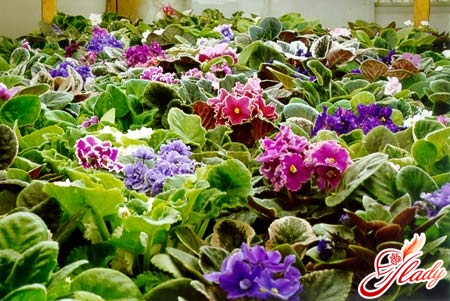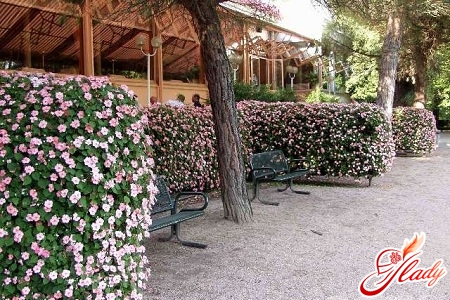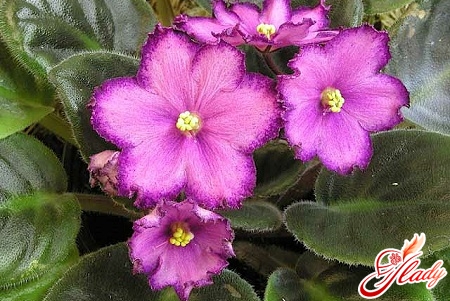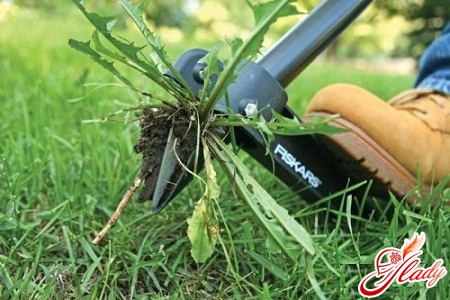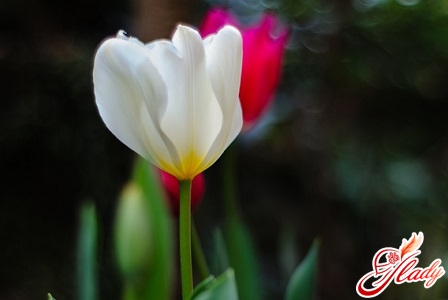 Few people remain indifferent to the floweringhouse plants. And amateurs-flower growers necessarily try to replenish their collection with at least one such specimen. True, most often, they prefer a simple and unpretentious in the care of flowers. Therefore, usually on the windowsills in our houses are all kinds of geraniums and violets. But to grow, for example, gloxinia, fuchsia or cyclamen not everyone will venture. Especially it concerns such plant as cyclamen Persian. The thing is that he blossoms, of course, stunningly beautiful! However, after flowering, this species enters a period of rest, discards the leaves and loses decorativeness. So this period of rest, many inexperienced growers are confused with the death of the plant, and therefore just throw a tuber that has lost its leaves. But even more experienced lovers of indoor plants do not always know how to properly preserve the tuber and achieve a repeated flowering cyclamen. This fact frightens many who want to acquire this gorgeous flower. And after all, it is only necessary - to know the rules of caring for the plant and strictly observe them. We offer you a brief educational program on this topic, and at the same time a small reference on the spectacular and bright cyclamen Persian.
Few people remain indifferent to the floweringhouse plants. And amateurs-flower growers necessarily try to replenish their collection with at least one such specimen. True, most often, they prefer a simple and unpretentious in the care of flowers. Therefore, usually on the windowsills in our houses are all kinds of geraniums and violets. But to grow, for example, gloxinia, fuchsia or cyclamen not everyone will venture. Especially it concerns such plant as cyclamen Persian. The thing is that he blossoms, of course, stunningly beautiful! However, after flowering, this species enters a period of rest, discards the leaves and loses decorativeness. So this period of rest, many inexperienced growers are confused with the death of the plant, and therefore just throw a tuber that has lost its leaves. But even more experienced lovers of indoor plants do not always know how to properly preserve the tuber and achieve a repeated flowering cyclamen. This fact frightens many who want to acquire this gorgeous flower. And after all, it is only necessary - to know the rules of caring for the plant and strictly observe them. We offer you a brief educational program on this topic, and at the same time a small reference on the spectacular and bright cyclamen Persian.
Biological portrait
The Persian cyclamen is also known by the namesAlpine violet and Buckwheat. This is a separate species of plants from the genus Cyclamen, belonging to the family of Mirsinovs. It is a perennial herbaceous herbaceous plant with a height of no more than thirty centimeters. The tubers of the cyclamen of Persia do not exceed fifteen centimeters in diameter and are distinguished by the presence of a single point of growth. The leaves of the Persian cyclamen can be painted from light to dark green and have a characteristic silver pattern on the surface. The plant has no stalk, and its leaves grow directly from the bulb, and therefore are called basal. The shape of the leaves is heart-shaped, and the size varies from five to ten centimeters in diameter. During flowering on the plant appear long peduncles, towering above the rosette of leaves and crowned with elegant flowers. The flowers of the Persian cyclamen have five petals, the lower one of which is bent backwards. Therefore, the flowers of the cyclamen resemble butterflies circling over a green bush, which gives the plant a special decorative effect. The color of the flowers varies from snow-white to maroon. In the wild, the Persian cyclamen grows in Iran, Asia Minor and the Mediterranean. The Persian cyclamen is known since Antiquity. According to ancient chronicles, this plant was grown in the gardens of Ancient Rome along with violets and narcissi. Antique and medieval healers using cyclamen tubers for the treatment of sinusitis and rheumatism, and also as an antidote for the bites of poisonous snakes. Currently, preparations from cyclamen tubers are used in homeopathy. 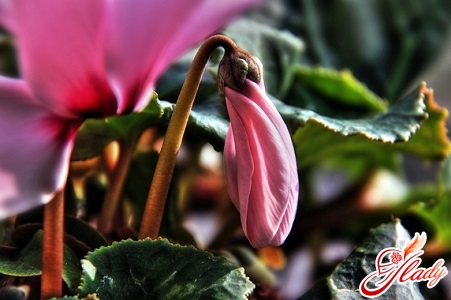
Varieties and hybrids
Today the Persian cyclamen is represented by a hugethe number of varieties and hybrids that differ in color, shape and size of leaves, texture, color and size of flowers, as well as the compactness and size of the bush itself. Among the various varieties of Persian cyclamen, one can find specimens with fringed petals, with particularly fragrant flowers, as well as plants of standard size, undersized and dwarfish. We present you the list of especially popular varieties of cyclamen of Persian. Lines of standard varieties (tall plants)
- Decora. Appreciates the pastel colors of flowers. The leaves of plants of this line have a characteristic marble pattern, and the flowers are painted in soft, soft colors.
- Firmament. Interest and value as a line of early-crowned cyclamen. Valued also for the large size of flowers.
- Rex. A line of cyclamen of compact size with decorative leaves, which have a silvery marble pattern.
- Ruffled. It is distinguished by flowers with wavy petals.
- Swetheart. Valued for the decorativeness of the leaves and a strong aroma of flowers.
- Triumph. A line of large-flowered varieties with decorative leaves.
Lines of undersized varieties (up to 22 centimeters high)
- Kaori. A line of dwarf plants with very fragrant flowers. A distinctive feature of the flowers is the contrasting bright middle.
- Mirabelle. A line of small-leaved varieties with flowers of various colors.
- Puppet. Miniature plants with especially fragrant flowers.
- Tiny Mites. The line of the smallest cyclamen is represented by varieties with a variety of colors.
- Turbo Laser. Sredneroslye varieties, characterized by compactness, rapid growth and abundant flowering.
Care of the plant
Proper care for the cyclamen is a guarantee of hissuccessful cultivation. First of all, you must not make mistakes when buying a flower. So, for example, you need to carefully inspect the aboveground base of the corms for the presence of rot. You need to do this by gently pushing open the leaves and inspecting the surface of the tuber protruding above the soil. As a rule, cyclamens acquire at the beginning of the flowering period - in September-October. After this, it is necessary to give the plant acclimatization and provide it with the best possible care. So, for example, it is important to choose a comfortable location for it. Cyclamens belong to photophilous plants, but they do not tolerate (or suffer with difficulty) direct sunlight. Therefore, for this flower you need to choose a place well-lit, but protected from direct sunlight. The ideal place for a cyclamen will be the sills of the eastern and western windows. On the northern window, the flower will experience a lack of light, and in southern lighting it will be redundant. Nevertheless, even the southern window can be adapted to the place for the flower, but it should be shaded from the direct sun. Proper care for the cyclamen implies not only the correct lighting mode, but also a comfortable atmosphere in the room. The air in the room should not be dry and heavy. This flower grows very poorly in stuffy rooms, and reacts painfully to drafts. Therefore, when ventilating the room, the cyclamen should be taken out of the room, and also the flowerpot should not be placed near the hot batteries and heaters. For the same reason cyclamen feels bad in the kitchen. By the way, the temperature in the room where the cyclamen grows should not be too high - this flower does not tolerate heat. The optimum temperature for the content of the Persian cyclamen is not more than twenty degrees in the daytime and about fifteen at night. Care for the cyclamen in regard to irrigation is reduced to a timely and moderate moistening of the soil. The regime for each plant is selected individually. Here a lot depends on the size of the flower, the size of the pot, and the location of the plant. The main condition - do not over-moisten the soil and prevent stagnation of water in the pot. The flower tolerates a lack of moisture much more easily than its excess. Therefore, watering cyclamen is necessary as the top layer of the soil dries up, and after watering it is essential to wipe dry the bottom of the pot and the pan. For irrigation, use only standing or filtered water at room temperature. Remember that excessive watering will lead to decay of the tuber and to the death of the plant. In addition, in permanently moist soil pests, such as pods or cyclamenic mosquitoes, can start. To maintain the desired level of humidity, the flower should be periodically sprayed. 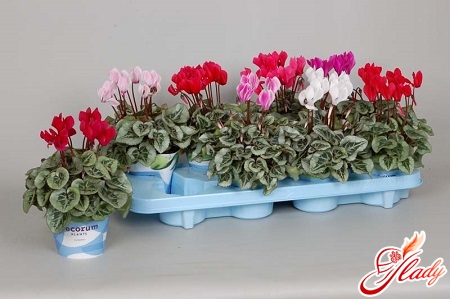
The rest period
After the flowering period, the Persian cyclamenenters a phase of rest. First, the plant gradually discards flowers, and then leaves. By the beginning of the rest period, only the tuber remains in the pot. Many inexperienced growers accept this condition for the death of the plant and throw it away. In fact, you only need to provide the flower with the appropriate relaxation conditions. To do this, with the beginning of the termination of flowering, watering is gradually reduced. Then remove all dead stems and leaves from the plant and allow the soil in the pot to completely dry out. After that, the pot with the tuber needs to be moved to a dark and cool room, but you can not clean it in the refrigerator. Do not completely forget about the flower, because the processes of vital activity do not stop it. Therefore, occasionally need to water resting tuber, supporting the soil in a slightly moistened state. The first signs of an exit from the rest period are the appearance of new shoots. At this time, you should transplant the tuber into a new pot, replacing the soil in it. When transplanting, the upper third of the tuber should be left above the ground. After transplantation, flower care should be resumed according to all rules. It is worth noting that although the Persian cyclamen is able to bloom repeatedly over several years, the color on it is getting smaller with time. Therefore, after two or three years of the life of the cyclamen, it should be propagated by the usual division of the tuber, forming a new full-fledged plant. You can multiply the flower and seeds, which is a more sparing and effective way. The collected seeds are sown in the steamed soil and covered with a saucer. The soil in the pot with the seeds is moistened very neatly and moderately. After the appearance of the first shoots, the saucer is removed, and at the stage of two or three real leaves the seedlings are dived into individual pots. Thus, new copies of this elegant home flower are obtained, which will allow him to live practically forever. The main thing - to ensure cyclamen proper care. Good luck!




